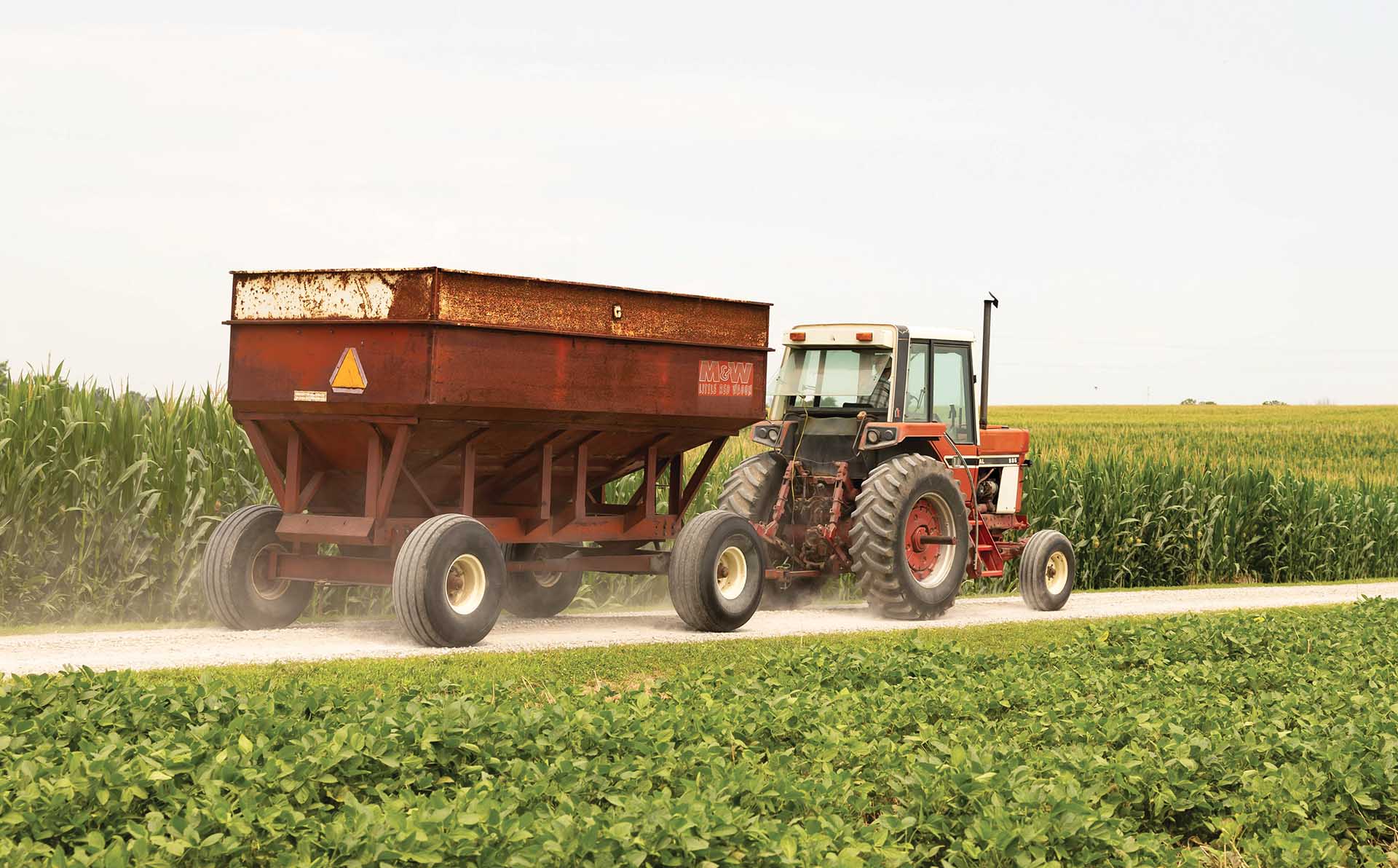
(Photo: Iowa Soybean Association / Joclyn Bushman)
Safety first this harvest season
September 3, 2024
Tips to prepare for a safe, productive harvest
Harvest season is here, and producers like Iowa Soybean Association (ISA) District 7 Director Lee Brooke will soon take to the fields to harvest his crops. All told, Iowa farmers are expected to harvest 22.4 million acres of soybeans and corn.
Even when the weather and field conditions are conducive to harvesting, Brooke knows safety concerns are always lurking in the fields and on the roads.
Prepared and alert
For Brooke, preparedness is part of his harvest routine.
“Before we start out, we’ll take care of the combines and tractors, have them inspected, and when we can, do some of the work ourselves in our shop,” he says. “Every year, we want to have our equipment in tip-top shape because it makes for a safer harvest.”
That includes replacing tires, ensuring the internal mechanics of combines and tractors are oiled and running smoothly, and anything that might help in preventing problems along the way.
“And we’re not doing things right before the harvest, but year ‘round,” Brooke says. “You shouldn’t wait until August and September to get everything done.”
Meanwhile, Brooke says he is always on the lookout for other drivers trekking along rural roadways, especially during the harvest.
“We live off a major county highway,” he says. “We are very concerned when we’re operating ‘wide,’ and we take up a lot of the road. We have cameras on the back of our combines and on the back of our grain carts. We’re especially alert as we turn into the fields.”
Since harvest can often run from sunup to sundown, Brooke says he and others in the field take breaks often, ensuring more than one person is engaged in the process should any problems arise.
Prior to going to a particular field, Brooke says everyone in the family is aware of who is where and what’s going on.
“We pretty much know where everyone is and which farm they’re harvesting,” he says. “We try and leave another vehicle in the field if there is a breakdown and we need that vehicle to get home.”
Brooke says he has water fire extinguishers on the combines and regular fire extinguishers in all vehicles. Brooke says he wants to be prepared, especially if conditions are windy, hot and dry, or if a bearing goes out and starts a fire.
“You have to check your equipment, grease the parts daily and look for those issues,” he says. “A loose piece of metal can start a fire quickly.”
Finally, Brooke says farmers need to keep their minds sharp and focused. Harvesting can include very long days and nights and being alert is paramount.
Dangerous profession
Dan Neenan, director of the National Education Center for Agricultural Safety (NECAS), says Brooke’s plans of action before and during the harvest season are on point.
“Agriculture, unfortunately, is still the most dangerous industry in the United States,” Neenan says. “The harvest only adds another layer of concern — the days are shorter; it gets darker early and there are more slow-moving vehicles on the road.”
According to the U.S. Bureau of Labor Statistics, in 2021 (the most recent information available), the ag sector incurred 453 fatalities across the country.
NECAS, Neenan says, will be focused on lowering those numbers during National Farm Safety and Health Week Sept. 15-21.
Throughout the week, Neenan says there will be daily topics of focus for farmers and the general public to think about, including equipment and rural roadway safety, health and wellness, generations of farming, confined spaces, and reporting ag injuries.
While safety efforts have improved over the years, Neenan says more must be done.
“We have to make safety top of mind,” he says, “especially during spring planting and the fall harvest when things are moving at a fevered pitch.”
Farm safety tips
1) Equipment and Rural Roadway Safety
Check farm machinery, making sure guarding, reflective markings and signage is secure, and that lighting is also working properly.
2) Health and Wellness
Be aware of your physical and mental well-being. Ensure you’re eating properly and staying hydrated, especially considering your medical and prescriptive needs. Brain health should also be observed. “We’re starting to see a number of layoffs in the ag industry, so we’re in a little bit of a downturn and cash can be short,” he says. “That can make things difficult when it’s time to bring the harvest in. It weighs on people’s minds, so make sure you have someone to talk to during this time.”
3) Generations of Farming
Fatalities and serious injuries on the farm impact every age demographic, but Neenan says many of these incidents involve children 18 and younger, and farmers 65 years old and above.
4) Confined Spaces
Know the dangers associated with grain bins, manure pits and other confined spaces. “There should always be at least two people there, specifically at least one person monitoring from outside (the bin or the pit),” he says. “And it’s not the evaluator’s job to rescue someone; instead they need to call 911 and get emergency personnel there.”
5) Reporting Ag Injuries
Neenan says when it comes to reporting these incidents, it’s important “that we use the correct terminology. Instead of accidents, it should be preventable incidents. The word ‘accident’ implies there’s nothing we could have done.”
Back